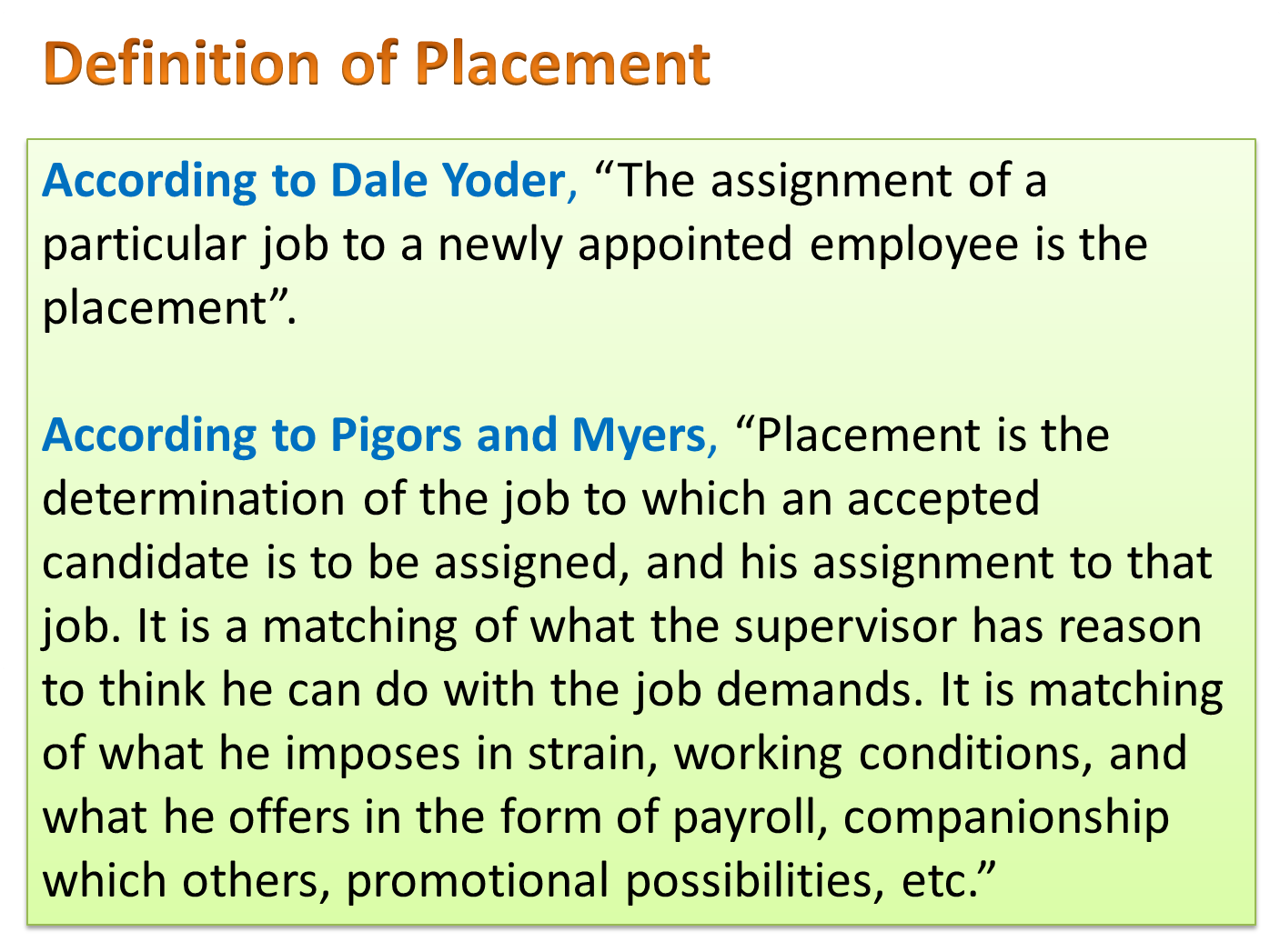The employee should be placed on his/her right job after he/she has been hired. The allocation of people to jobs is known as placement. It is a process of assigning or re-assigning employees to a new or different job.
Thus, placement is the procedure of placing the right person on the right job and the aim of the placement is to place the hired candidates in the jobs for which they have the needed skills.

Principles of Placement
In the placement of employees following principles are followed:
1) Principle of Job First, Man Next: The principle of “Job First, Man Next” means a person should be placed in accordance with job requirements instead of adjusting the job according to the need and credentials of the person.
2) Principle of Qualifications: Employees should be placed on such a job for which they are qualified. They should not be placed in a very high or very low job position.
3) Principle of Timely Preparation: All the arrangements which are needed for placement should be done before the joining date of the newly hired employee.
4) Principle of Working Conditions: The employee should be made aware of all the information regarding working conditions existing in the company. He should also be provided information about punishments if he commits any mistakes.
5) Principle of Loyalty and Cooperation: Employees should be made to feel a sense of commitment and cooperation in their new job so that they can understand their responsibilities better towards the job and the organization.
6) Principle of Transfer: Initially, placement can be temporary as variations may occur after the training is completed. Transfer of the employee to other jobs may occur where he can perform as expected.
Process of Placement
There are four steps in the procedure of employee placement which are as follows:
Step 1: Data Collection: In the employee placement procedure, the first step is to collect data about the employee for the purpose of identifying the qualifications, skills, and abilities of present employees.
Step 2: Evaluation: After completing the first step of collecting employee data, the next step is to evaluate the capability of an employee in order to analyze the type of job that best suits to the employee.
Step 3: AllocationfPlacing: In this step, the company places the employee on the job which is best suitable for him.
Step 4: Control: The final step in this procedure is control. This step involves measuring and observing the employee performance in that particular job.
Benefits of Placement
The benefits of proper placement are as follows:
1) Raise Employee Morale: Proper placement makes it easier for the employee to adjust himself to the work and helps him to give a standard performance. This helps to raise the morale of the employee.
2) Keep Employees Motivated: Employees are motivated if they are properly placed by matching their skills and job requirements. If they are motivated they produce better output.
3) Reduce Labour Turnover and Absenteeism: If employees are properly placed in their jobs then absenteeism and employee turnover is reduced. This results in effective utilization of machines, equipments and materials.
4) Increase Employee Efficiency: Proper placement helps to improve employees’ efficiency as he is able to produce better results, communicate with people effortlessly, feel motivated, become punctual, and avoid committing errors.
5) Keep Employees Satisfied: Placement aims to keep employees satisfied. If an employee is properly placed in his job he works with zeal and his work performance is high.